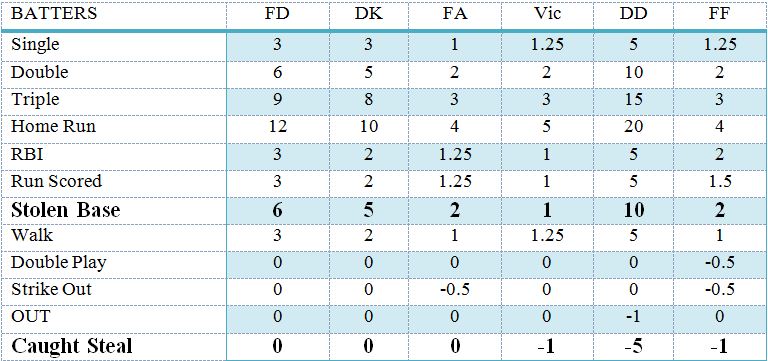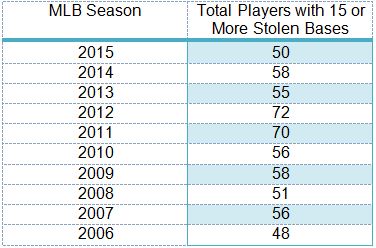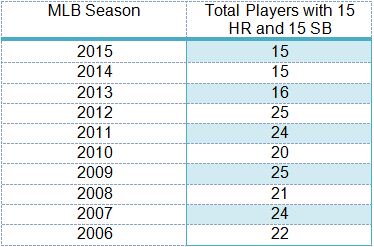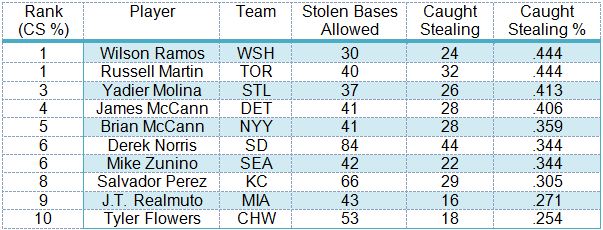Introduction and Some Neat-O Prep Stats to Get You Thinking
There’s no denying it, we love the home run (Ahoy, Isolated Power – how I love thee!). I mean, isn’t it every MLB Grinder’s dream to win a high-stakes GPP tournament with a three-run homer, just squeaking by the dude ahead of you for the win? I think about it all the time. I know you do. You have to love the triumphant feeling of snatching victory away from a direct DFS competitor because your hitter cranked a late-inning home run, right? It’s almost as lovely as lemon meringue pie.
In the end, however, all that matters is the total sum of points accumulated by your carefully chosen lineup.
That means: singles, doubles, walks, and other hitting statistics – including the oft-forgotten stolen base – all add up and play an important role in the construction of your lineup. It’s not always about the home run.
In this course, I will point out how to exploit the stolen base, a lineup commodity that I consider underutilized and undervalued. If you’re sneaky and smart, you’ll be able to take advantage in the right spots. But before getting to it, I thought I’d bring up some intriguing neat-o prep stats that will get you thinking how to effectively build a lineup, taking advantage of the stolen base.
With that in mind, let’s get as basic as we can for a moment. Sometimes I need a quick brush-up on hitters’ scoring systems for each major DFS site, and I know you do too. So, please, give this a gander:
Batters Scoring Systems
I find it sort of cathartic to review scoring systems now and then – I need to feed my OCD ways – just to make sure I put my mind to rest. It’s a weird deal, I know, but the way I look at it is it can’t hurt to periodically review all sites’ scoring systems, especially those of us that forget stuff now and then.
Of note, DraftKings no longer penalizes players for being caught stealing. We’ll touch on this more a bit later, though.
Did you know there were 50 players that swiped 15 or more bases in 2015? In fact, take a look at the last 10 seasons:
Not that the above table gives you tremendous insight, although it’s nice to know that there are still plenty of stolen base opportunities to pull from when building your lineups, even if the total amount of stolen bases in 2015 (2,505) dropped significantly from 2014 (2,762). And, actually, stolen bases in general have dropped significantly since 2012 (3,229). Don’t fret, my friends, there is still solid value here.
Taking things a bit further, here is the total amount of players over the last 10 seasons that were able to nab 15 HR AND 15 SB:
I’m sure there are some thought-provoking reasons as to why total stolen base numbers have dropped drastically from 2012 (Billy Beane and Sabermetrics anyone?); however, we’re not going to get into that. I just merely wanted to point out the opportunity that is there in players that steal bases; plus, the nice power/speed combo players to build from on a nightly basis, taking advantage of both the homer AND stolen base. Why not go with a power/speed guy over just a power guy when all suggestive “roster me” research between so-said players is even?
One more neat-o table for you – an important tool in building your DraftKings lineups – showing the best catchers in the game at throwing out runners in 2015 (minimum 100 games played):
Rostering speedsters on DraftKings that play against these catchers are a bit riskier than others, considering their prowess behind the plate. Makes you think, doesn’t it? Hopefully, I’ve got your mind buzzing about as I delve into the next lesson. Rock on!



